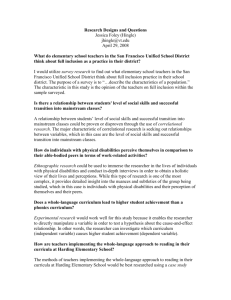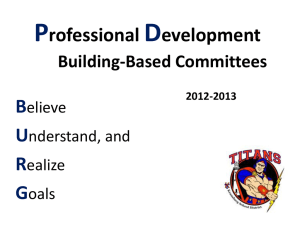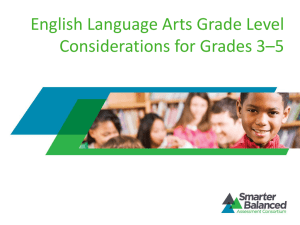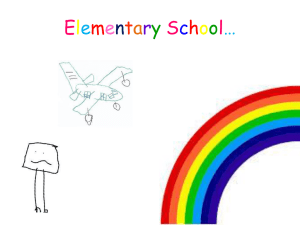From Encyclopaedia Britannica to Wikipedia: TESS
advertisement
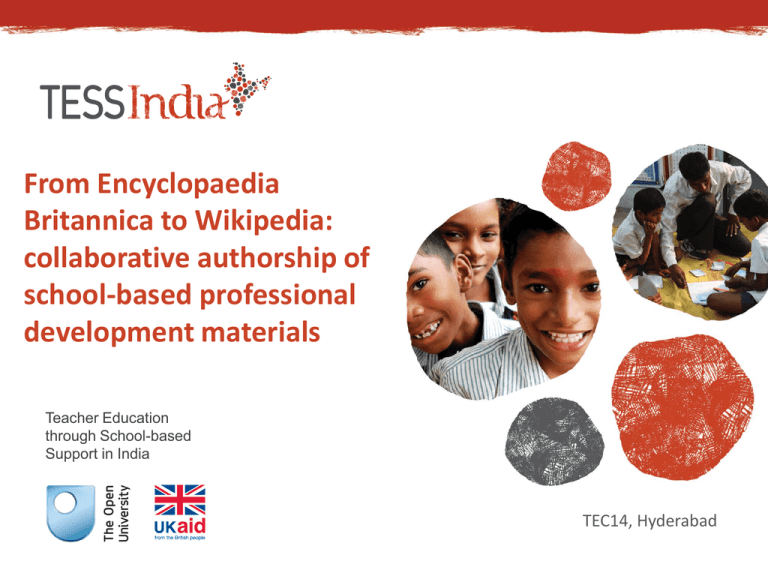
From Encyclopaedia Britannica to Wikipedia: collaborative authorship of school-based professional development materials Teacher Education through School-based Support in India TEC14, Hyderabad Introduction • Tess-India: Teacher Education through School-based Support in India • Led by: The Open University UK, with funding from DfID/UKaid • Goal: to provide flexible, practical, context-appropriate school-based teacher development at scale • Format: as Open Educational Resources (OERs), to be translated and localised as required • Design: to employ a Wikipedia-based model of creating teacher development resources that draws on the collective wisdom of teacher educators from India and in place of the traditional top-down Encyclopaedia Britannica approach professional training. The materials • • • One set of School Leadership and Management Units (LDUs) (20 units) Seven sets of Teacher Development Units (TDUs) (15 units per set) Elementary Language and Literacy Development • • Elementary Science Secondary Science • • Elementary Maths Secondary Maths • • • Elementary English Secondary English Total 125 units • • All include An introduction, learning outcomes, practical activities, case studies, reflective tasks, images, photos, videos Valuing different voices • The ‘institutionalised intellectual isolation of the school teacher’ (NCFTE, 2009) • A host of disconnections at different levels of the teacher education system • Agency, capability and the pursuit of good quality education Our approach to teacher development • Starts from the voices of Indian teachers and an appreciation of their educational context • Is supportive and speaks directly to the teacher • Focuses on transferable classroom techniques • Includes many practical activities • Takes the form of a resource or tool kit, rather than a linear course • Stands alone, complementing other forms of training • Suggests and inspires rather than being prescriptive and exhaustive • Provides the ‘seeds’ for adaptation and adoption • Promotes reflection Our emergent pedagogic principles 1. 2. 3. 4. Lessons actively engage students Teaching learning involves dialogue There is mutual respect between teachers and students New learning builds on students’ prior learning and existing knowledge 5. Teaching Learning is relevant to students’ lives 6. Children’s background, skills and attitudes are valued, as well as content, knowledge and understanding 7. Assessment is holistic, continuous and values a range of skills and competencies The wikipedic writing process • Gathering a bi-national writing team • Scoping what is needed (policy, research, experience) • Outlining a syllabus for each subject set, focusing on classroom techniques, as applied to selected topics • Writing each unit as a team, peer reviewing and reworking it to produce the first draft • Circulating the first draft to critical readers (Indian and UK pedagogues) • Using their feedback to inform the writing of the second draft • Preparing the audio visual content (photos and films from Indian classrooms) • Developmentally testing the materials in Indian classrooms Production • Standardisation and quality assurance of the set of TDUs & LDUs • Signing off of final drafts • Formatting, editing and tagging of text and video content • Final quality check • Publication of the units in English as ‘shells’ • Making them available in multiple formats: in print, online, on CDs, on SD cards for mobile phones As OERs, the online sets of units are: • Free • Open • Assume adaptation and amendment by teacher educators, in conjunction with user feedback • To be translated • To be localised to fit different teaching and learning contexts • Never finished or complete Example content from Elementary English (1) EE 02: English emergent literacy: songs, rhymes and word play: Activity 5 EE 15: Everyday English: using the community as a source: Activity 1 Example content from Elementary English (2) EE 15: Everyday English: using the community as a source: Activity 5 EE 6: Reading English: shared reading and guided reading: Resource 2 Example content from Secondary English (1) SE 02: English in the Classroom: Case study 1 Example content from Secondary English (2)-SE 6: Helping students write independently: Resource 1 SE 12: Teaching literature: Activity 5 Units • The units represent both tools that can be employed according to their users’ differing needs and contexts, and vehicles for creating supplementary units to extend what is currently available. • As such, they place their end-users at the centre of their creation, enhancement and deployment, in a collaborative, needs-driven, iterative process. “Our efforts to communicate with each other have, I hope, helped shape our materials with a balance of thoughtfulness and practicality.” Professor R. Amritavalli Hyderabad To find out more, see our website: • www.TESS-India.edu.in

